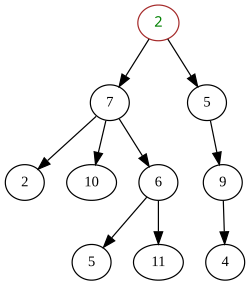Tree data structure

Imagine all the information in the world is in a giant folder. This folder has lots of papers, with each paper having lots of information. But it's really hard to find what you're looking for in this giant folder because everything is just jumbled together.
Now imagine if we could organize this folder like a tree. At the very top, we have the root of the tree. This is like the main index of the folder. Just like how you would use the index in a book to find the right page, you can use the root node to find the information you need in the folder.
From the root, we have branches that lead off into different sections. Each of these branches represents a different category of information - like animals, plants, or people. Then, from those branches, we have even more branches that lead to more specific subcategories.
So if we want to find information on elephants, we can start at the root and follow the branch for animals. Then, from that branch, we can follow the branch for mammals and eventually get to the branch for elephants.
This is a basic example of how a tree data structure works. It's essentially a way to organize data so that it's easier to search through and find what you need. The tree has a root node that branches off into other nodes, each of which can branch off into more nodes, creating a hierarchical structure.
Now imagine if we could organize this folder like a tree. At the very top, we have the root of the tree. This is like the main index of the folder. Just like how you would use the index in a book to find the right page, you can use the root node to find the information you need in the folder.
From the root, we have branches that lead off into different sections. Each of these branches represents a different category of information - like animals, plants, or people. Then, from those branches, we have even more branches that lead to more specific subcategories.
So if we want to find information on elephants, we can start at the root and follow the branch for animals. Then, from that branch, we can follow the branch for mammals and eventually get to the branch for elephants.
This is a basic example of how a tree data structure works. It's essentially a way to organize data so that it's easier to search through and find what you need. The tree has a root node that branches off into other nodes, each of which can branch off into more nodes, creating a hierarchical structure.
